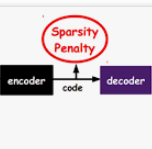The sparse representation of signals defined on Euclidean domains has been successfully applied in signal processing. Bringing the power of sparse representations to non-regular domains is still a challenge, but promising approaches have started emerging recently. In this paper, we investigate the problem of sparsely representing discrete surfaces and propose a new representation that is capable of providing tools for solving different geometry processing problems. The sparse discrete surface representation is obtained by combining innovative approaches into an integrated method. First, to deal with irregular mesh domains, we devised a new way to subdivide discrete meshes into a set of patches using a feature-aware seed sampling. Second, we achieve good surface approximation with over-fitting control by combining the power of a continuous global dictionary representation with a modified Orthogonal Marching Pursuit. The discrete surface approximation results produced were able to preserve the shape features while being robust to over-fitting. Our results show that the method is quite promising for applications like surface re-sampling and mesh compression.
翻译:在厄几里德域定义的信号的微弱代表面已被成功地应用于信号处理中。 将微弱代表面的力量带给非常规领域仍是一项挑战, 但最近才开始出现一些有希望的方法。 在本文中,我们调查了稀少代表离散表面的问题,并提出一个新的代表面能够提供解决不同几何处理问题的工具。 稀疏离的表面代表面是通过将创新方法结合到一种综合方法而获得的。 首先,为了处理非常规网状区域,我们设计了一种新的方法,用地貌识别种子取样法将离散的 meshes 分解成一组补丁。 其次,我们通过将连续的全球字典代表面的力量与经修改的奥多孔进取追求法结合起来,实现了与超合适控制的表面近似性。 所产生的离散表面近似效果能够保存形状特征,同时能够进行过度适应。 我们的结果表明,该方法对于地表再采样和网状压缩等应用来说很有希望。



